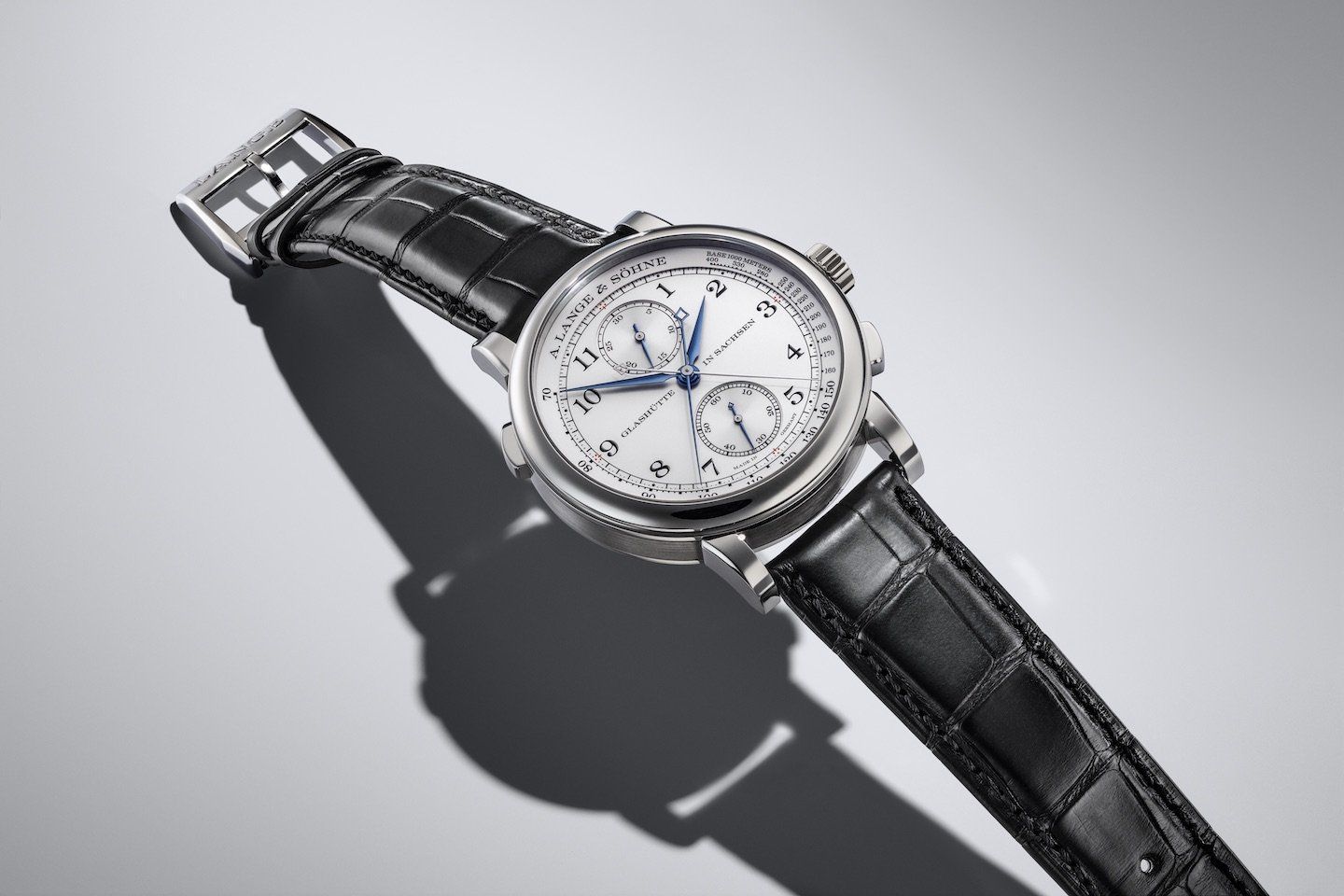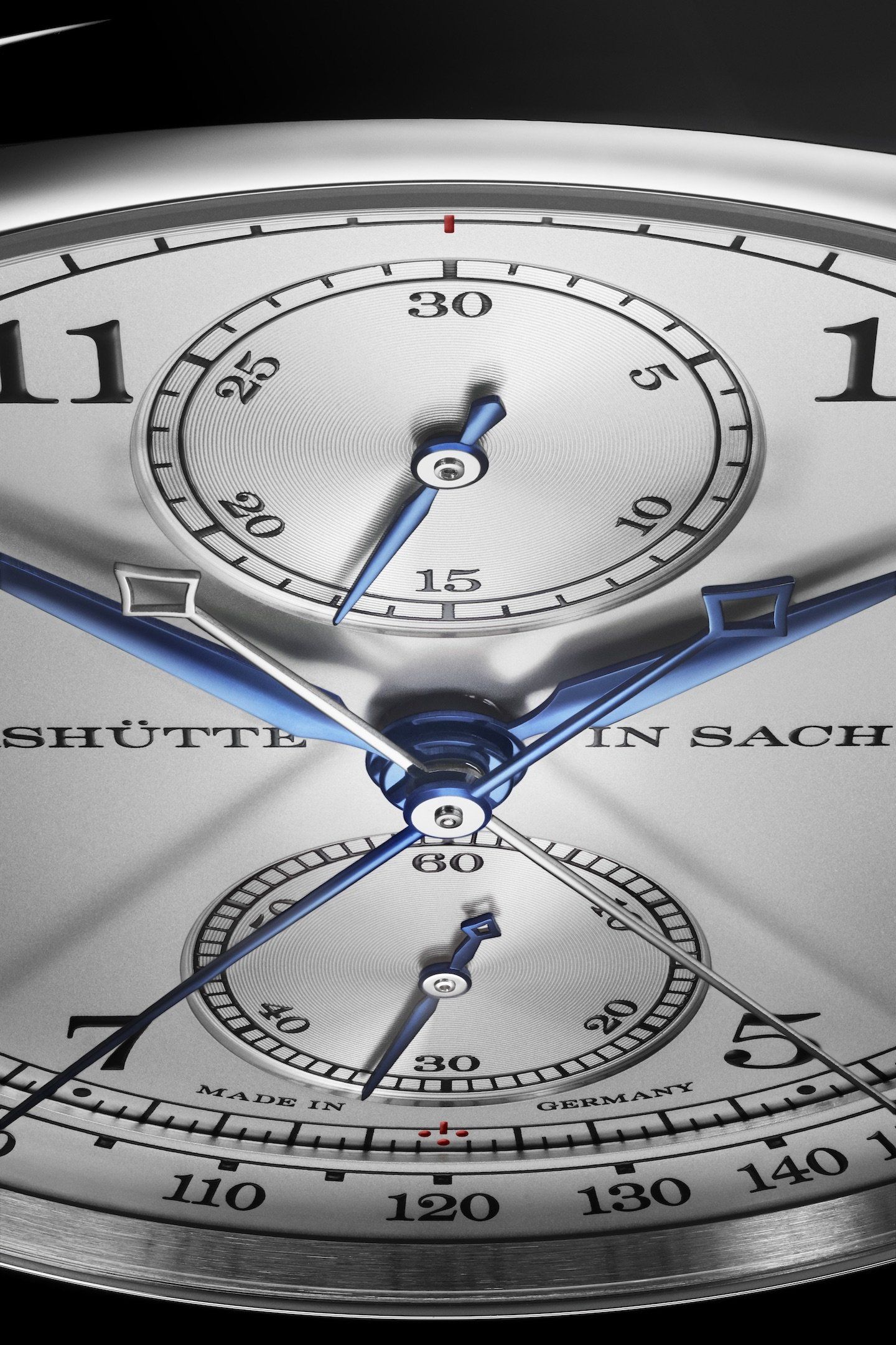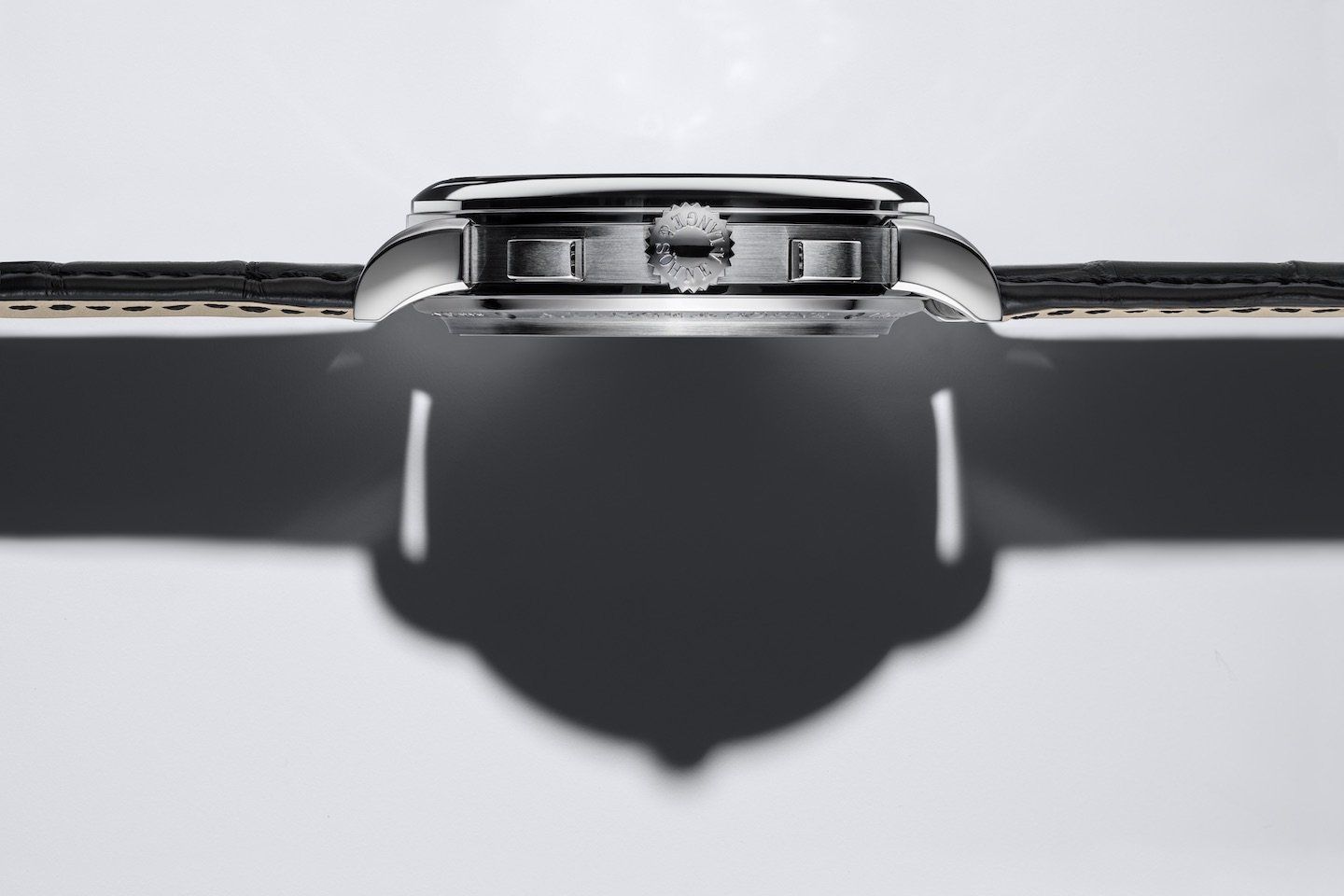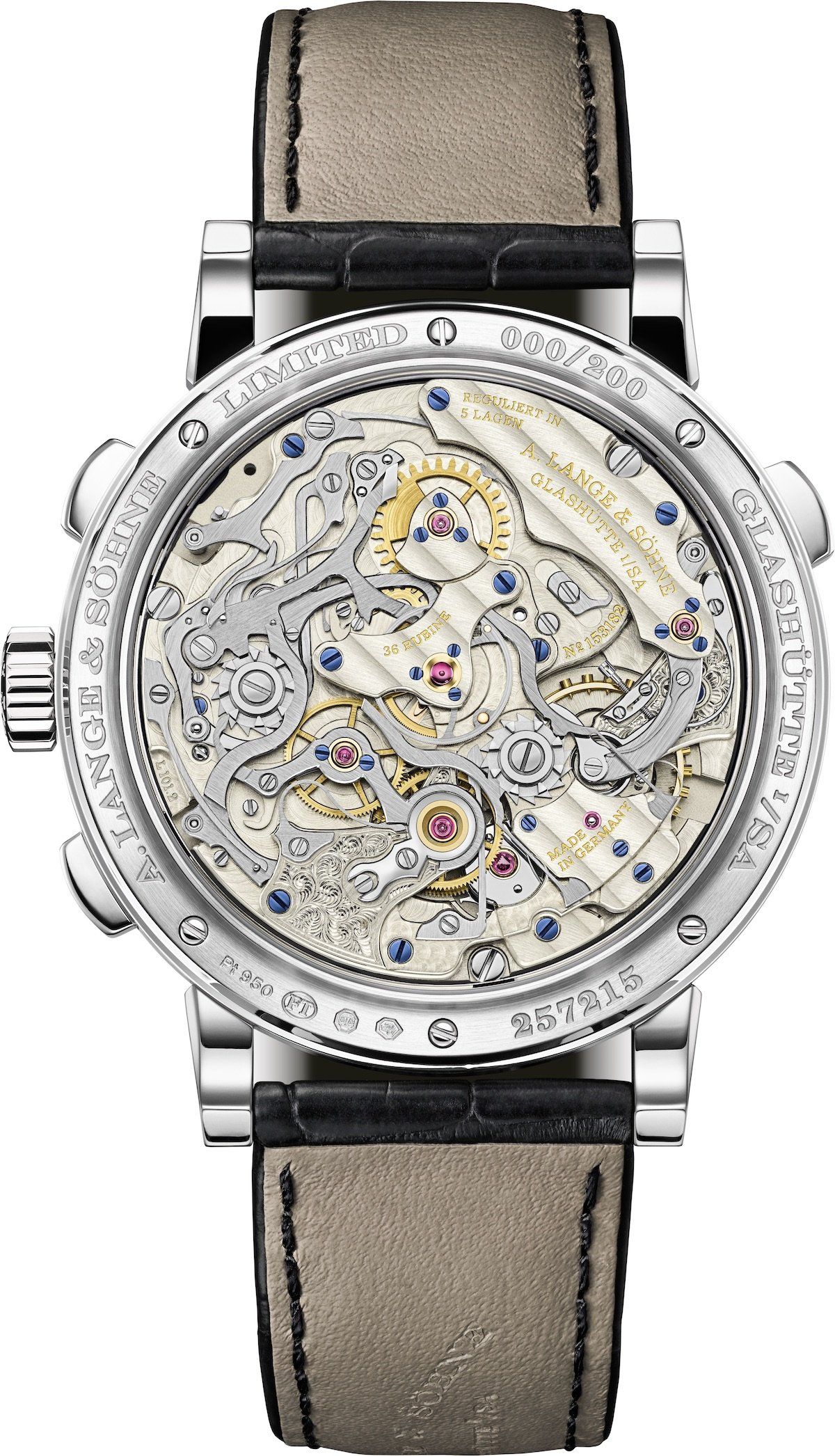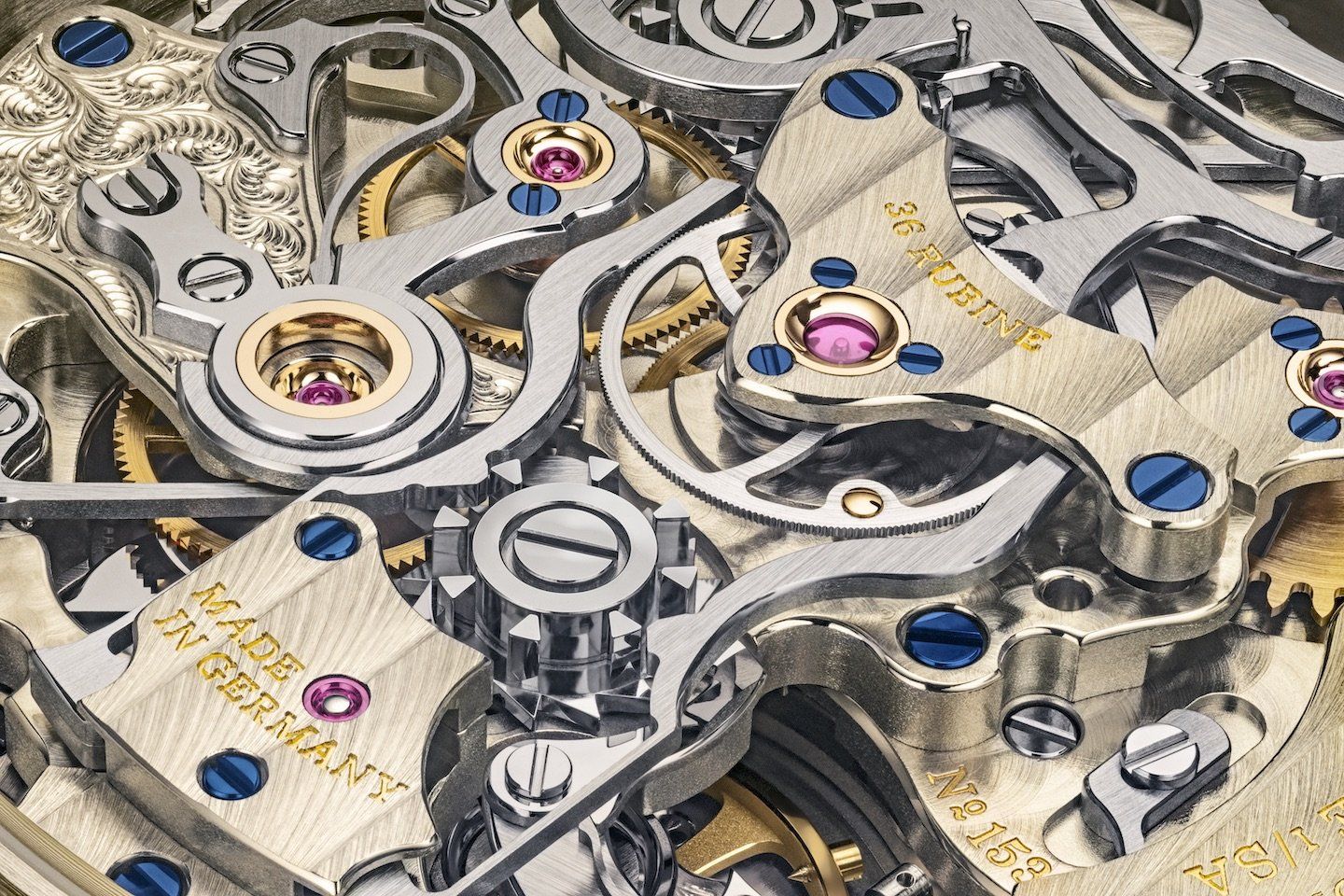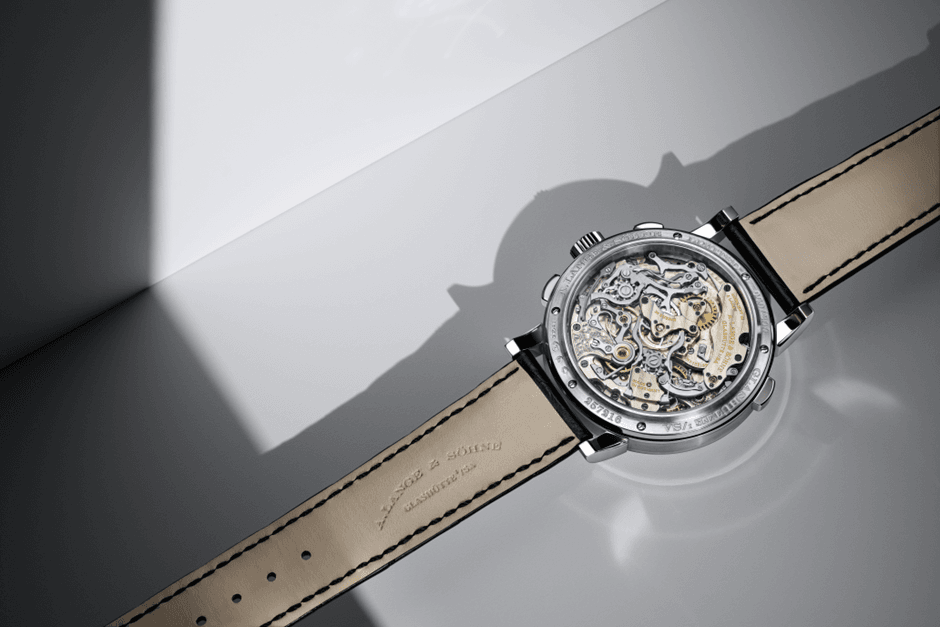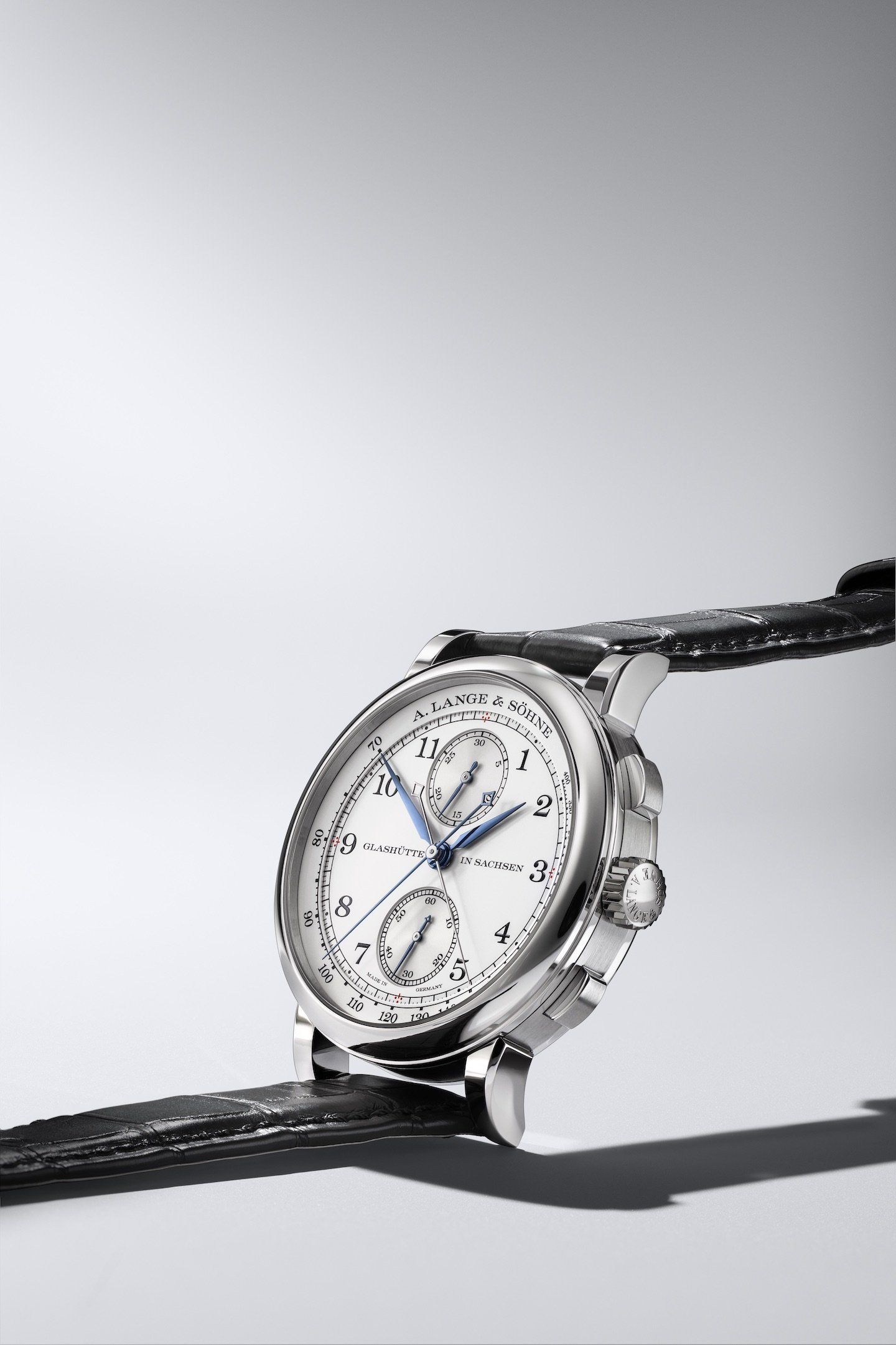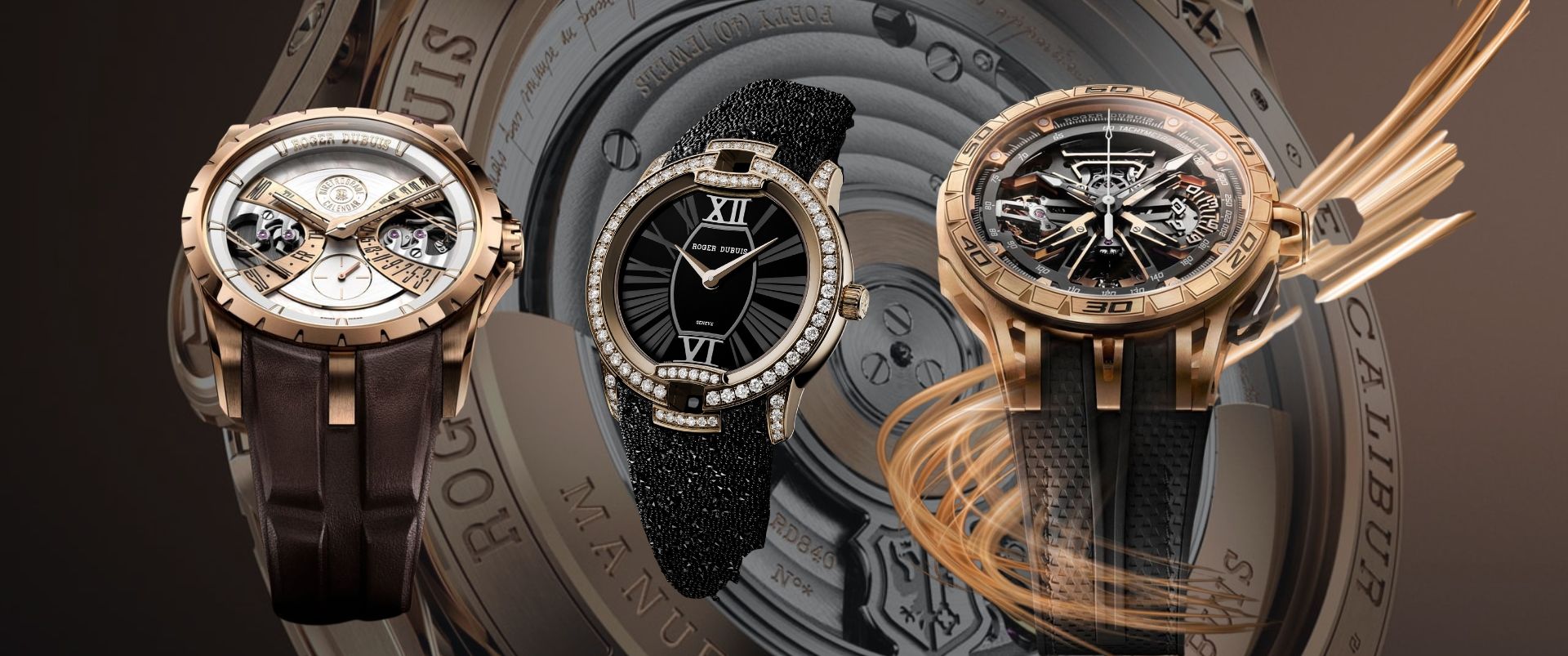A. Lange & Söhne 1815 Rattrapante: A Sophisticated Horological Complication
A. Lange & Söhne is expanding its 1815 model family with a timepiece boasting one of the most complicated horological complications: the Chronograph Rattrapante. The new model is entirely centered on the titular complication, and it features a custom-developed movement. Apart from the framework for a completely distinct dial design, it also represents the drive that allows the Saxon manufactory to go its own way. The 1815 Rattrapante has a platinum casing and is limited to 200 pieces.
The masterclass of short-time measurement
A. Lange & Söhne's watchmakers display their skill in the field of short-time measurement once more with the 1815 Rattrapante. Its complicated mechanism extends the capabilities of a traditional chronograph by measuring a random number of lap times within a minute. The watch has two superposed chronograph hands for this purpose, the center chronograph hand and the center Rattrapante hand. When the pusher at 2 o'clock is pressed, both hands begin at the same time. The center rattrapante hand can now be stopped and readjusted independently of the center chronograph hand. This process, which may be used to calculate lap times, can be performed indefinitely.
The 1815 RATTRAPANTE is housed in a luxurious platinum casing. The contrast between the brilliant argenté dial and the dark-blued hands is excellent, ensuring superb legibility. The watch's conventional design components include the peripheral railway-track minute scale and the prominent Arabic numerals. They accurately represent the genre that distinguished the historic Lange pocket watches and the model family that is currently named after Ferdinand Adolph Lange's birth year.
The watchmakers can freely set the placements of the subsidiary dials thanks to the invention of their movement. Instead of the usual places at 3 and 9 o'clock, the 30-minute counter and subsidiary seconds dial are at 12 and 6 o'clock on the vertical center axis, correspondingly. This symmetrical layout lends a harmonious and expressive personality to the 1815 RATTRAPANTE. Furthermore, the peripheral tachometer scale enables the calculation of average speeds.
Manufacture caliber L101.2
The manufacture movement L101.2 powers the 1815 RATTRAPANTE. The complete rattrapante chronograph mechanism is made visible through the sapphire-crystal caseback which enables detailed observation of the intricate switching processes. Controlling elapsed and lap-time metrics is done precisely and traditionally using two-column wheels. The mainspring barrel has a power reserve of 58 hours when fully coiled. The freely oscillating Lange balancing spring, in conjunction with the screw balance, offers outstanding rate accuracy at a frequency of 21,600 semi-oscillations per hour (3 hertz).
With this complication conceived and constructed by Lange, it is already the seventh caliber. The movement was already included in the 1815 RATTRAPANTE HONEYGOLD "Homage to F. A. Lange" with a unique finissage. The manufactory marked the 175th anniversary of Saxon precision watchmaking in 2020 with this 100-watch limited edition utilizing Lange's distinctive honey-gold alloy.
The signature of the grand masters
The caliber's finissage, which was meticulously built twice, recalls Ferdinand Adolph Lange's tradition: his movements always protruded attention with strong design aspects as well as incomparable aesthetic nuances. The caliber L101.2 movement has bridges and cocks constructed of untreated German silver, a screw balance, screwed gold chatons that secure the jewels, and a hand-engraved balance cock, that characterizes the 1A quality attribute - the finest quality category of his pocket watches. When combined with cutting-edge watchmaking techniques, these classical elements combine to generate a micromechanical marriage of the crafts.
The upper surfaces of the rattrapante chronograph's working parts, such as levers, springs, and jumpers, are all ornamented with straight graining, while the peripheral chamfers are polished. Finishing specialists faced a unique problem when it comes to bevel-polishing re-entrant angles. The success in polishing the corners acutely, so they are legitimately sharp, is one only achievable by highly experienced artisans.
A class of its own
One of the most complicated challenges in precision watchmaking is the ideation and execution of top-flight chronographs, particularly split-seconds chronographs. To ensure the precision and reliability of the intricate system, substantial expertise, experience, and patience are imperative.
The new 1815 RATTRAPANTE is highlighted as a classic rendition of the split-seconds mechanism, as well as a unique complication. It is housed in a platinum case with a diameter of 41.2 millimeters. Despite the technical difficulty of its 365-part manually wound caliber, Lange's engineers were able to keep the case height to 12.6 millimeters. Because of its horological sophistication, this masterpiece is limited to a global edition of 200 pieces.
No articles found

